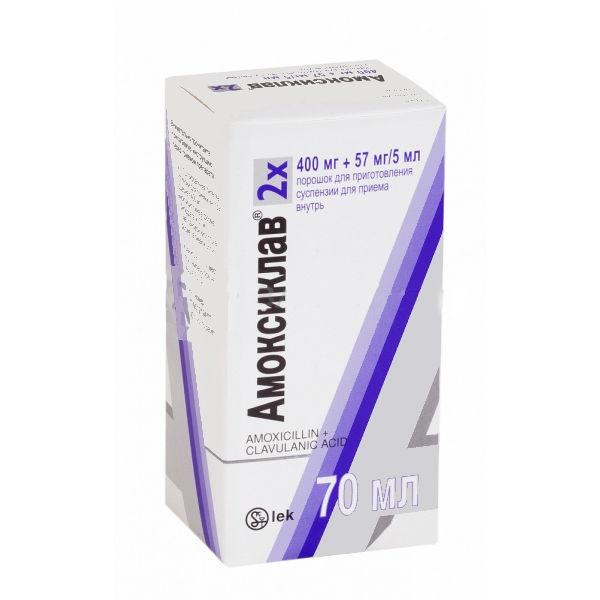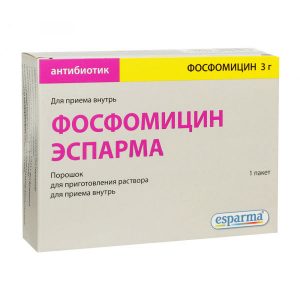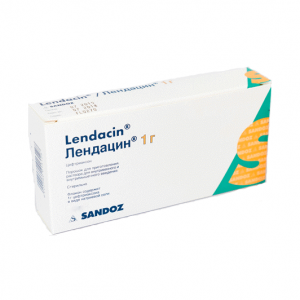Description
Pharmacological action of srdlp is a combination of amoxicillin – semisynthetic penicillin with a wide spectrum of antibacterial activity and clavulanic acid – an irreversible inhibitor of -lactamase. Clavulanic acid forms a stable inactivated complex with these enzymes and ensures the resistance of amoxicillin to the effects of ОІ-lactamases produced by microorganisms.
Clavulanic acid, similar in structure to beta-lactam antibiotics, has a weak intrinsic antibacterial activity.
Amoxiclav has a wide spectrum of antibacterial action.
Active against amoxicillin-sensitive strains, including strains producing -lactamases, including Gram-positive aerobic bacteria: Streptococcus pneumoniae, Streptococcus pyogenes, Streptococcus viridans, Streptococcus bovis, Staphylococcus aureus (except for methicillin-resistant strains), Staphylococcus epidermidis (except for methicillin-resistant strains), Lactobacillus spp. aerobic gram-negative bacteria: Bordetella pertussis, Brucella spp., Campylobacter jejuni, Escherichia coli, Gardnerella vaginalis, Haemophilus influenzae, Haemophilus ducreyi, Klebsiella spp., Moraxella catarrhhalis, Neeriaeria neeriaeria Pasteurella multocida, Proteus spp., Salmonella spp., Shigella spp., Vibrio cholerae, Yersinia enterocolitica, Helicobacter pylori, Eikenella corrodens anaerobic gram-positive bacteria: Peptococcus spp., Peptostreptocococcus spppppppp. Comppll. spp., gram-negative anaerobes: Bacteroides spp.
Indications
Infections caused by susceptible strains of microorganisms:
– infections of the upper respiratory tract and ENT organs (including acute and chronic sinusitis, acute and chronic otitis media, pharyngeal abscess, tonsillitis, pharyngitis)
– infections of the lower sections respiratory tract (including acute bronchitis with bacterial superinfection, chronic bronchitis, pneumonia)
– urinary tract infections
– gynecological infections
– infections of the skin and soft tissues, including animal and human bites
– bone and connective tissue infections
– biliary tract infections (cholecystitis, cholangitis)
– odontogenic infections.
Contraindications
– hypersensitivity to any of the components of the
preparation – hypersensitivity to penicillins, cephalosporins and other beta-lactam antibiotics
– history of cholestatic or jaundice or jaundice or jaundice
acids – infectious mononucleosis and lymphocytic leukemia.
With caution, the drug should be used with a history of pseudomembranous colitis, with liver failure, severe renal impairment, as well as during lactation.
Special instructions
During the course of treatment, the functions of the hematopoietic organs, liver and kidneys should be monitored.
Patients with severe renal impairment require adequate dosage adjustment or increased dosing intervals.
In order to reduce the risk of adverse reactions from the gastrointestinal tract, the drug should be taken with meals.
Laboratory tests: high concentrations of amoxicillin give a false-positive reaction to urine glucose when using Benedict’s reagent or Felling’s solution. Enzymatic reactions with glucosidase are recommended.
Influence on the ability to drive vehicles and operate machinery
There is no evidence of a negative effect of Amoxiclav in recommended doses on the ability to drive or operate machinery.
Composition
5 ml of finished suspension. amoxicillin (in the form of trihydrate) 400 mg clavulanic acid (in the form of potassium salt) 57 mg
Excipients: citric acid (anhydrous) – 2.694 mg, sodium citrate (anhydrous) – 8.335 mg, microcrystalline cellulose and sodium carmellose – 28.1 mg, gum xanthan – 10 mg, colloidal silicon dioxide – 16.667 mg, silicon dioxide – 217 mg, wild cherry flavor – 4 mg, lemon flavor – 4 mg, sodium saccharin – 5.5 mg, mannitol – 1250 mg.
Dosage and Administration
Inside.
Daily doses of a suspension of 400 mg + 57 mg / 5 ml are calculated per 1 kg of body weight depending on the severity of the infection and are 25-45 mg / kg body weight / day (in terms of amoxicillin), divided into 2 doses.
To facilitate proper dosing, a 400 mg + 57 mg / 5 ml suspension pipette is inserted into each package of a suspension, graduated simultaneously in 1, 2, 3, 4, 5 ml and 4 equal parts.
Recommended dose of suspension depending on the body weight of the child and the severity of the infection.
Powder for suspension 400 mg + 57 mg / 5 ml: shake the bottle vigorously, add 59 ml of water (up to the mark) in two doses, each time shaking well until the powder is completely dissolved.
Side effects
Side effects in most cases are mild and transient.
From the digestive system: loss of appetite, nausea, vomiting, diarrhea rarely – abdominal pain, impaired liver function, increased activity of liver enzymes (ALT or AST) in isolated cases – cholestatic jaundice, hepatitis, pseudomembranous colitis.
Allergic reactions: pruritus, urticaria, erythematous rash rarely – erythema multiforme exudative, angioedema, anaphylactic shock, allergic vasculitis in isolated cases – exfoliative dermatitis, Stevens-Johnson syndrome, acute generalized exanthematous pustulosis.
From the hemopoietic system and lymphatic system: rarely – reversible leukopenia (including neutropenia), thrombocytopenia very rarely – hemolytic anemia, reversible increase in prothrombin time (when combined with anticoagulants), eosinophilia, pancytopenia.
From the nervous system: dizziness, headache very rarely – cramps (can occur in patients with impaired renal function when taking the drug in high doses), hyperactivity, anxiety, insomnia.
From the urinary system: very rarely – interstitial nephritis, crystalluria.
Other: rarely – development of superinfection (including candidiasis).
Overdose
There are no reports of fatal or life-threatening side effects due to an overdose of the drug.
Symptoms: in most cases, disorders of the gastrointestinal tract (abdominal pain, diarrhea, vomiting), possibly also anxious agitation, insomnia, dizziness in isolated cases – convulsive seizures.
Treatment: the patient should be under medical supervision symptomatic therapy. In the case of recent administration of the drug (less than 4 hours), it is necessary to wash the stomach and prescribe activated charcoal to reduce the absorption of the drug. Amoxicillin / potassium clavunate is removed by hemodialysis.
Active ingredient
Amoxicillin, Clavulanic acid
terms of sale
pharmacies Prescription
Dosage form
oral suspension



